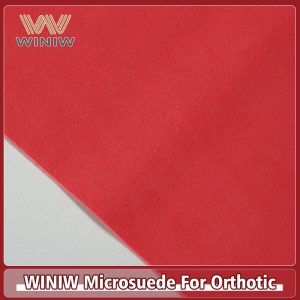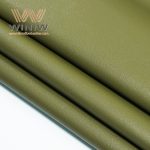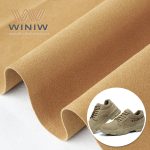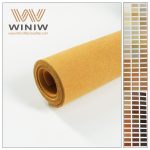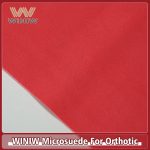Longevity
You want your shoes to last as long as possible. Fabric faux leather shoes offer impressive durability, but their lifespan depends on the quality of the material and how you care for them. WINIW microfiber lining resists scratches, high temperatures, and wrinkling, which helps your shoes look new for longer. However, compared to real leather, faux leather shoes may not soften or mold to your foot over time. Real leather shoes often last for many years and improve with age, while faux leather shoes provide reliable performance for several seasons with proper care. You can extend the life of your shoes by following recommended cleaning and maintenance routines.
Water and Stain Protection
Waterproof Qualities
You need shoes that protect your feet from water and stains. Fabric faux leather excels in this area because it uses synthetic materials like polyurethane, which are non-porous and resist liquid penetration. Manufacturers test these waterproof qualities using methods such as hydrostatic pressure tests, spray tests, and rain tests. These tests measure how well the shoes keep water out under different conditions. Low air permeability and strong adhesion between the fabric and coating ensure that your shoes remain waterproof, even during heavy rain or accidental spills.
Easy Maintenance
You benefit from shoes that are easy to clean and maintain. Fabric faux leather resists stains because of its smooth, non-porous surface. You can usually wipe away dirt or spills with a damp cloth. For tougher stains, you may use mild soap or specialized cleaners designed for synthetic materials. Regular cleaning helps prevent buildup and keeps your shoes looking fresh. If you want to maintain waterproofing, you can apply sprays or creams that create a protective barrier. Reapplying these treatments regularly ensures your shoes continue to repel water and stains.
Tip: Always check the care label before using any cleaning product on your shoes to avoid damaging the material.
- Key points about water and stain protection:
- Most faux leather shoes are waterproof due to their synthetic composition.
- You can easily clean off stains with simple methods.
- Waterproofing sprays and creams help maintain protection.
- Regular care keeps your shoes looking new and prevents stains from setting.
Comparison to Other Shoe Materials
Real Leather
You may wonder how fabric faux leather compares to real leather. Real leather shoes are famous for their durability and ability to last many years with proper care. They soften and mold to your foot, becoming more comfortable over time. Real leather also resists wear and develops a unique patina, making each pair of shoes one-of-a-kind. However, real leather requires regular conditioning and can be more expensive.
Synthetic Leather
You find synthetic leather shoes in many stores because they are affordable and animal-friendly. High-quality synthetic leather can last several years if you care for it properly. However, synthetic leather tends to wear out faster than real leather and may peel or crack over time. Fabric faux leather, especially when made with advanced microfiber technology, offers better scratch resistance and flexibility than standard synthetic leather. You get a balance of durability, style, and easy maintenance.
Fabric and Mesh
You might choose fabric or mesh shoes for their lightweight feel and breathability. These materials are comfortable for casual wear or sports, but they do not offer the same level of durability or protection as faux leather. Fabric and mesh shoes absorb water and stains more easily, making them harder to clean. If you want shoes that resist stains and last longer, fabric faux leather provides a better option.
Note: When selecting shoes, consider your lifestyle and the environments you encounter most often. Fabric faux leather shoes give you a strong combination of durability, water resistance, and easy care, making them a smart choice for everyday wear.
Comfort in Faux Leather Shoes
You expect your shoes to deliver comfort from the first step to the last. Fabric faux leather, especially when made with advanced microfiber technology, brings you a unique combination of breathability, flexibility, and lightweight construction. These features work together to ensure your shoes feel great, even during long days or in warm weather.
Breathability
Airflow
You notice the difference as soon as you slip on shoes lined with stretchy micro vegan fabric. The material allows air to circulate freely around your feet. This airflow prevents heat buildup, so your feet stay cool and fresh. The porous structure of the microfiber base lets your shoes breathe, which reduces the risk of odor and discomfort. You can walk, run, or stand for hours without feeling stuffy or overheated.
Moisture Control
You benefit from superior moisture management in fabric faux leather shoes. Unlike traditional leather, which absorbs water and needs regular conditioning, faux leather resists moisture and dries quickly. You spend less time worrying about sweat or rain damaging your shoes. Here how moisture control compares:
- Faux leather resists water and cleans up easily, so you avoid moisture damage.
- Real leather absorbs water, which can lead to stains, cracking, or drying if not maintained.
- Faux leather offers better moisture resistance, making it easier for you to manage wet conditions.
- You need less maintenance to keep your shoes looking and feeling good.
Tip: If you want shoes that handle sweat and rain with ease, choose a pair with a stretchy faux leather lining.
Flexibility and Fit
Stretchy Lining
You experience a new level of flexibility with shoes that feature a stretchy lining. The micro vegan fabric stretches in multiple directions, adapting to the natural shape and movement of your foot. This stretch ensures your shoes move with you, not against you. You avoid the stiffness that sometimes comes with traditional materials. The lining hugs your foot gently, providing support without restricting movement.
Snug Fit
You enjoy a secure, customized fit every time you wear shoes with a stretchy faux leather lining. The material conforms to your foot, filling gaps and reducing friction. This snug fit helps prevent blisters and discomfort, even during extended wear. You get the support you need for walking, running, or standing, all while maintaining flexibility. The stretch properties also help your shoes retain their shape, so they look and feel new for longer.
Note: A snug, stretchy fit means your shoes adapt to your foot unique contours, delivering consistent comfort throughout the day.
Lightweight Feel
All-Day Wear
You appreciate the lightweight construction of fabric faux leather shoes. The micro vegan material weighs less than traditional leather, so your feet feel less burdened. You can wear your shoes all day without experiencing heaviness or fatigue. The combination of stretch and lightness makes these shoes ideal for busy days, travel, or any activity that keeps you on your feet.
Reduced Fatigue
You notice less fatigue when you choose shoes made with synthetic materials like PU and microfiber. These shoes weigh less than those made from real leather. The lighter weight means you use less energy with every step. You stay comfortable, even after hours of walking or standing. The stretch and shock-absorbing qualities of the material further reduce strain on your feet and legs.
- Synthetic leather shoes are lighter than traditional leather shoes.
- The reduced weight decreases foot fatigue.
- Flexibility and shock absorption enhance comfort for long periods.
Blockquote: Lightweight, stretchy shoes help you stay energized and comfortable, no matter how long your day lasts.
You find that fabric faux leather shoes combine stretch, softness, and lightness to create a superior wearing experience. The material adapts to your foot, supports all-day wear, and keeps you comfortable in any condition. Whether you face warm weather, long hours, or constant movement, these shoes deliver the comfort and performance you need.
Cleaning and Care for Shoes
Cleaning Faux Leather Shoes
Recommended Methods
You keep your shoes looking their best by following a few essential cleaning steps. Regular cleaning removes dirt and prevents stains from setting in. For cleaning faux leather, start with a mild detergent mixed with water to create a gentle solution. Dampen a soft cloth with this mixture and gently wipe the surface of your shoes. Avoid rubbing, as this can cause premature wear. After cleaning, use a dry cloth to remove any excess moisture. Let your shoes air dry naturally, away from direct sunlight or heat sources. For deep cleaning, massage a small amount of melted coconut oil into the surface with a clean cloth. This step helps maintain the material softness and shine.
Tip: Always allow your shoes to dry completely before wearing them again. This simple step prevents odors and keeps your faux leather care routine effective.
Products to Avoid
When caring for imitation leather, you protect your shoes by avoiding certain products and practices. Stay away from harsh chemicals and abrasive cleaners, as these can damage the synthetic surface. Never soak or submerge your shoes in water, since faux leather is not waterproof. Avoid drying your shoes near heat sources or in direct sunlight, which can cause fading and brittleness. If you use a hair dryer, keep it at least 6–12 inches away from the material. Strong detergents and alcohol-based products should also be avoided during deep cleaning.
- Avoid harsh chemicals and abrasive cleaners.
- Do not use direct heat or sunlight for drying.
- Never soak shoes or use strong detergents.
- Keep away from extreme temperatures to prevent warping.
Storage Tips
Preventing Deformation
Proper storage plays a key role in faux leather care. You maintain the shape of your shoes by using shoe trees or stuffing them with tissue paper or newspaper. Avoid stacking shoes or placing heavy objects on top, as this can cause deformation. Store your shoes in a cool, dry place, away from extreme heat or cold. Use shoe racks or individual boxes to keep your shoes organized and dust-free. Rotating your shoes regularly also helps reduce wear and prolongs their lifespan.
Moisture Protection
You extend the life of your shoes by protecting them from moisture. Always clean your shoes before storage to remove dirt and moisture, which can lead to stains and odors. Make sure your shoes are completely dry before putting them away. Store them in breathable fabric bags or ventilated boxes, not plastic bags, to allow air circulation. Applying a water repellent spray adds an extra layer of protection against stains and water damage. These faux leather care tips help maintain the integrity and appearance of your shoes.
Tip: Use cedar shoe trees to absorb moisture and keep your shoes fresh during storage.
Extending Lifespan
Regular Checks
You ensure your shoes last longer by performing regular cleaning and maintenance checks. Clean your shoes with mild soap and water or a specialized leather cleaner. Apply leather conditioner periodically to keep the material supple and prevent cracking. Protect your shoes from sharp objects and avoid exposing them to direct sunlight or extreme temperatures. Store your shoes in a temperature-controlled environment, covering them with a cloth or dust bag. Remove your shoes from storage occasionally for deep cleaning and conditioning. This imitation leather care routine prevents peeling, drying, and other damage.
Timely Repairs
Addressing minor issues quickly is one of the most effective tips for extending the life of your shoes. Promptly repair scratches, scuffs, or loose stitching to prevent further damage. Regular care and conditioning keep the material resistant to cracking and peeling. Storing your shoes away from harsh environments also reduces wear and tear. By caring for imitation leather with timely repairs and deep cleaning, you maintain both the durability and appearance of your shoes.
Note: Consistent faux leather care, including regular cleaning, conditioning, and timely repairs, ensures your shoes stay comfortable and stylish for years.
Choosing Faux Leather Shoes
What to Look For
Intended Use
When you select shoes made from fabric faux leather, always start by considering your intended use. If you need shoes for daily wear, look for options with a durable polyester or cotton base and a PU coating. This combination offers a balance of flexibility, breathability, and eco-friendliness. For athletic activities, prioritize shoes with mesh or knit uppers that allow for better airflow and stretch. If you want shoes for formal occasions, choose styles with a smooth finish and subtle stretch to maintain a polished look. Specialized shoes, such as those designed for foot health, often use soft, stretchable fabrics to reduce pressure points and enhance comfort.
- Match the type of upper to your activity: canvas or knit for casual, mesh for sports, and synthetic leather for dress shoes.
- Durability and breathability should guide your choice for everyday or warm-weather use.
- For boots or outdoor shoes, select materials that resist water and stains.
Style and Color
You have a wide range of style and color options when choosing fabric faux leather shoes. Modern manufacturing allows for vibrant colors and unique finishes, so you can easily find shoes that match your wardrobe. If you want a custom look, many brands offer shoes in various shades and textures. Always check for colorfastness to ensure your shoes maintain their appearance over time. When you want to stretch your style, experiment with bold colors or patterns.
Tip: Choose shoes with a stretch lining for a snug fit and lasting comfort, especially if you plan on breaking them in gradually.
Comfort and Fit
Sizing
Proper sizing is crucial for comfort. When you try on shoes, make sure there is enough room for your toes to move, but not so much that your foot slides. If you find the fit slightly tight, consider using a shoe stretcher or a leather-stretching spray to gently stretch the material. These tools help soften the faux leather and make breaking in new shoes easier. Some people prefer to size up in faux leather, especially if they plan to wear thicker socks or need extra space for insoles. Always test the fit by walking and flexing your feet to ensure the shoes stretch and adapt to your movement.
- Use a shoe stretcher to adjust fit if needed.
- Leather-stretching spray can help stretch tight areas.
- Breaking in shoes gradually prevents discomfort.
Insoles
The right insoles can transform your experience with fabric faux leather shoes. Medium-volume insoles work best for most casual shoes, providing balanced support and cushioning. If you need extra stability, choose supportive insoles that address issues like heel slippage or foot elongation. Always test insoles by standing on them before placing them inside your shoes. Remove the stock insoles if necessary to ensure a proper fit. A good insole will stretch with your foot and enhance overall comfort.
- Supportive insoles improve fit and reduce fatigue.
- Medium-volume insoles suit most fabric faux leather shoes.
- Test insoles for comfort before finalizing your choice.
Note: For the best results, combine a shoe stretcher, leather-stretching spray, and the right insoles to maximize comfort and stretch in your shoes.
Certifications and Quality Control
When you invest in fabric faux leather shoes, check for certifications that guarantee safety and sustainability. Look for brands that follow strict quality control standards. The table below highlights key certifications to consider:
| Certification Name | Purpose and Focus | Relevance to Fabric Faux Leather Shoes |
|---|---|---|
| OEKO-TEX® STANDARD 100 | Tests textiles and accessories for harmful substances to ensure chemical safety | Ensures fabric and faux leather materials are free from toxic substances |
| OEKO-TEX® LEATHER STANDARD | Ensures chemical safety and legal conformity of leather and leather-like materials | Applies to leather-like materials used in footwear, including faux leather |
| OEKO-TEX® STeP | Certifies sustainable and responsible manufacturing processes | Supports ethical and sustainable production of fabric faux leather shoes |
| OEKO-TEX® MADE IN GREEN | Combines product safety and sustainable production certifications with traceability | Provides assurance of safety, sustainability, and traceability in shoe production |
| OEKO-TEX® ECO PASSPORT | Screens chemicals, dyes, and auxiliaries used in production | Ensures safe chemical use in manufacturing processes |
| OEKO-TEX® RESPONSIBLE BUSINESS | Supports due diligence in supply chains | Encourages ethical sourcing and business practices |
By focusing on these factors, you ensure your shoes deliver the right stretch, comfort, and durability for your needs. Always prioritize quality, fit, and certifications when choosing your next pair.
You gain lasting value when you choose fabric faux leather shoes. These shoes deliver impressive durability, comfort, and eco-friendliness. You ensure your investment lasts by following proper care routines. Regular care, including gentle cleaning and smart storage, keeps your shoes looking new. You protect your shoes from wear by using the right care products. For best results, follow expert care tips and check your shoes often. Sustainable materials reward you with high performance and easy care.
FAQ
What makes fabric faux leather shoes more durable than regular fabric shoes?
You benefit from a synthetic coating that resists scratches, water, and stains. The microfiber base adds strength and flexibility. This combination helps your shoes last longer than standard fabric options.
Can you wear faux leather shoes in hot or humid weather?
You can wear faux leather shoes comfortably in warm conditions. The breathable microfiber lining allows air to circulate, keeping your feet cool and dry even during humid days.
How do you clean fabric faux leather shoes?
You should wipe your shoes with a damp cloth and mild soap. Avoid harsh chemicals and soaking. Let your shoes air dry away from direct sunlight or heat sources for best results.
Are fabric faux leather shoes eco-friendly?
You support sustainability when you choose these shoes. Manufacturers use cruelty-free materials and eco-conscious processes. Many products meet international environmental standards, making them a responsible choice.
Do faux leather shoes stretch over time?
You experience a flexible fit from the start. The stretchy micro vegan fabric adapts to your foot shape. This material maintains its snug fit without excessive stretching or losing form.
What should you look for when buying faux leather shoes?
You should check for quality certifications, colorfastness, and a comfortable fit. Look for shoes with a soft, stretchy lining and durable construction. Choose styles that match your needs and preferences.




